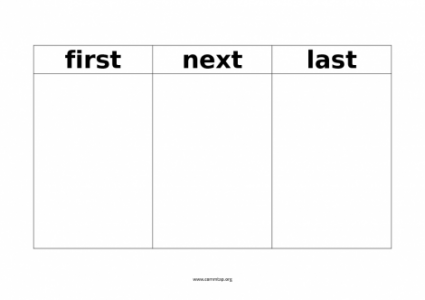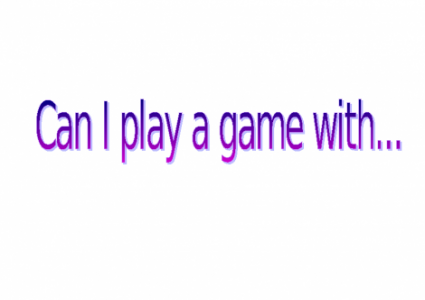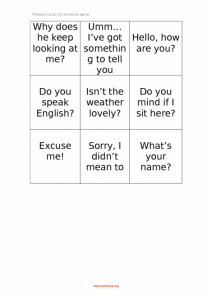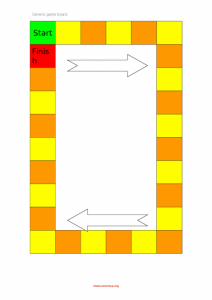Search
User login
Commtap Code Download
HTML to docx Converter (BSD licensed version)
This code is used to power the Word document downloads on this site (example - click on the Word document icon towards the top right of that page). The code is available under a GPL license from https://github.com/neilt1700/htmltodocx.
Contribute Activities
Key things you can do
Choose one of the following and follow the steps to create and/or upload your own activities sheet or upload a file which could be used as an additional resource. For advanced users: you can fill in forms on the site instead of uploading.
Commtap for Speech and Language Therapy Students
This two hour workshop is aimed at Speech and Language Therapy students. We will show students how the site is organised and how to add and edit things on the site. The workshop includes:
First next last; first last templates
Template to use for first/next/last or first/last sequencing - with space for pictures. Example activities: sequences three pictures with first next and last.
Created 18 October 2012; updated 19 July 2015.
Initiation prompt cards
Examples of prompt cards you could use to help a child initiate - includes the main part of a sentence which the child may need to fill in using a name. Example activity.
Created 18 October 2012; updated 8 December 2015.
Robert's Friend
One day there was a boy called Robert. He was starting at a new school. On his first day, he met lots of children in his class. At playtime, he went outside with everyone else. Some children played football. Some children played hopscotch. Some children ran around and played tag. Robert wished he could play. He didn’t know anybody yet.
Phrases cards for emotions game
Created 18 October 2012; updated 30 April 2022.
Generic game track
A coloured track which, along with dice and counters for example, could be used to make a variety of activities into a game - for example, shake the dice, move the counter, and if you land on an orange square, pick a card and describe what is on it.
Created 18 October 2012; updated 19 July 2015.
1-6 Grid
Grid containing the numbers 1 to 6. This can be used in a number of games - for example this emotions game.
Created 18 October 2012; updated 30 April 2022.
Sources of Information, Support and Additional Resources
This is a list of some sources of information, support and resources in the UK. You can edit this page, or you could create another page for organisations in your country.
Information and Support
How it all started
Lorna describes the early history of Commtap
Use two key word instructions in everyday activities
| Activity/strategy name and materials required | How to do the activity | Key principles for doing the activity and comments |
|---|---|---|
| Making a cup of tea - telling you what to do Kitchen with everything appropriate for making a cup of tea. You don't need to have them out and ready though - finding the stuff can be part of the activity. | 1. Sit in the kitchen at an empty table and say you want to make a cup of tea - but you don't know what to do (or have forgotten what to do); 2. See if the person suggests getting something - e.g. teabag or cup. If the person suggests something, e.g. teabag, ask where you can find it. See if they can tell you - e.g. "cupboard" - but if not, give then some suggestions - e.g. "in the cupboard or in the fridge?" - have a look in the fridge if they suggest that. If the person doesn't suggest anything, give a funny choice, e.g. shall I get a cup or a paint brush - if they suggest "paint brush", get one and then look really confused when you have it - see if they can correct you, or if there is not paint brush to find, look equally confused. Get a cup even if they don't prompt you to get one (as if you've suddenly remembered!) 3. As you go along, try to get the person to extend the language - but don't try to get them to repeat, also try to avoid asking leading questions (for example avoid asking "shall I stir the tea now?"). For example if you have a tea bag and a cup, and they say "cup", indicating that you put something in the cup, put something else in the cup - e.g. a pen. If they then say teabag, do something with the teabag - but don't put it in the cup. At this point they may try to put the two words together, e.g. "teabag...cup". If not, you can give them a choice. Try the following: "teabag in the cup or pen in the cup" (you might get a response of "teabag" in which case put it somewhere - not in the cup); or "teabag in the cup or pen in the bag" or "pen in the bag or teabag in the cup" (easiest because the target phrase is last). | If the person is not familiar with making a cup of tea already, you should spend some time doing this - talking them through what you are doing as you make the tea. The key principle here is to give the minimum amount of prompting. You will need to adjust the level of prompting so that the person is a little bit challenged by the task - but not so much that there are long pauses (what constitutes a long pause will vary from person to person). As far as possible, you are trying to literally do what the person says - so if they say something that's potentially ambiguous, choose a more amusing interpretation of what they have said. The idea is that this activity should be really fun, and also prompt the person to try and add more information and be more accurate. |
| Everyday activities Whatever is required for the activity. Activities could include:
|
Signalong 20th Anniversary Conference
Signalong are celebrating their 20th anniversary with a conference at the Royal Festival Hall in London on 20th September 2012.
Speakers at the conference include John Bercow MP - Speaker of the House of Commons, Anna Reeves - head of ACE North and the government’s Communication Champion, Bob Black - parent and leading expert on education for people with Down’s Syndrome and Flo Longhorn - author and consultant in special and multisensory education.
Communication activities for classes
A selection of speaking and listening activities on Commtap which could be used with classes, for example on No Pens Day Wednesday. If you spot any other suitable activities on the site, you can edit this page. Or if you have an idea for another activity, you could add it to the site.
Understand and use ordinals (1st, 2nd, 3rd etc)
| Activity/strategy name and materials required | How to do the activity | Key principles for doing the activity and comments |
|---|---|---|
| Write it Writing materials |
| This works best 1:1. Use this activity only with a child who can read and write. With children with less good literacy skills, you will need to talk about what you are going to focus on, but miss out the written support. With children who can cope with larger numbers, you might want to go beyond 10, be careful to explain how numbers such as 21st, 22nd and 23rd are formed. |
| Line up None | This works best with a class or group. You may want to focus more on the front of the line. | |
| PE Equipment as required by the PE activity | This works best with a class. | |
| Small World Small world equipment, including several ‘people’. | This works best 1:1. This activity is more suited to younger children. | |
| Actions Equipment as required by the actions. Visual prompt cards if required. | This works best 1:1 or with a small group. Make sure you stress words such as “first”, “second” etc. Bear in mind the child’s auditory memory – the more instructions you give, the harder it will be to remember them. |
Support Commtap to keep it online
Thank you for visiting Commtap.
Please read this message as it is extremely important.
- Visitor donations mean we can continue to host over 1,000 free activities to support speech, language, and communication development.
- Visitor donations mean we can continue to provide free resources to address a wide range of communication needs, including limited speech or language, interaction challenges, and needs associated with conditions such as developmental language disorder, autism, and cerebral palsy.
- Visitor donations mean we can continue to provide resources to support the work of speech and language therapists, teachers, teaching assistants, parents, and carers.
- Visitor donations mean we can continue to provide the free key word sign dictionary (bks.org.uk) which has over 2,000 Makaton and Signalong signs.
We know that not everyone is able to afford to pay to access these resources, however, if you can, please make a donation to keep the site going.
Thank you
Google ads on this page are provided by Google Adsense - and their presence does not imply any endorsement by Commtap. Report a problem with an ad on this page. Log in (for free) to avoid seeing Google ads.





